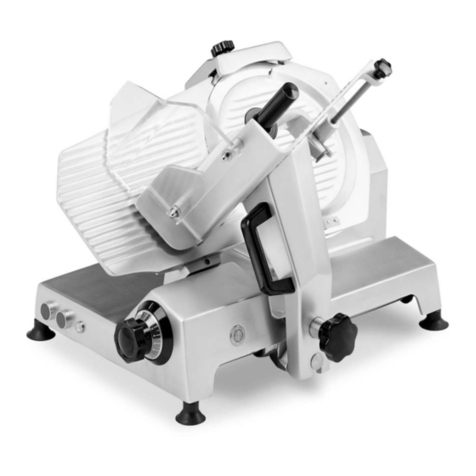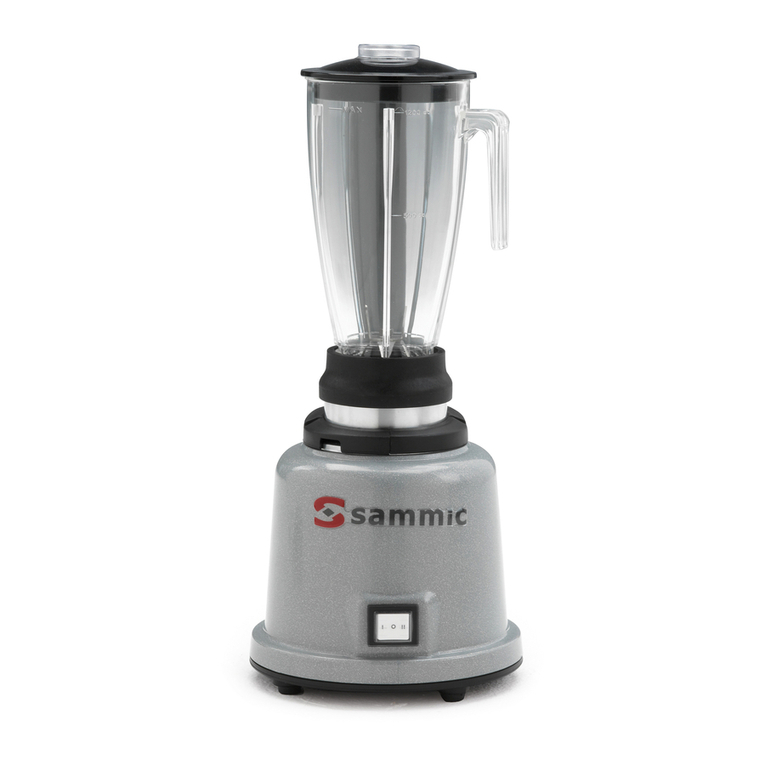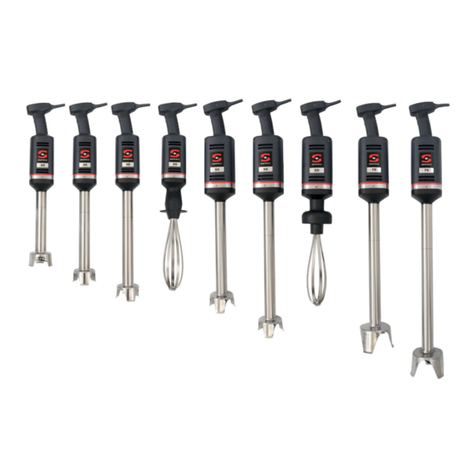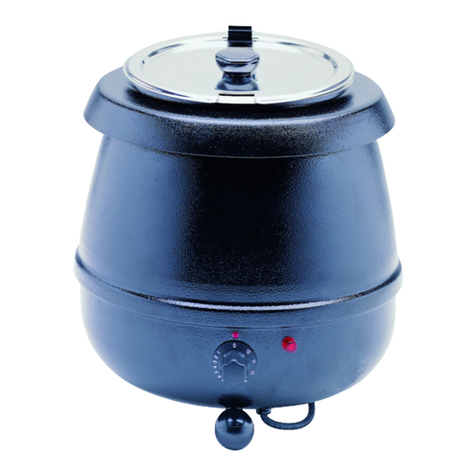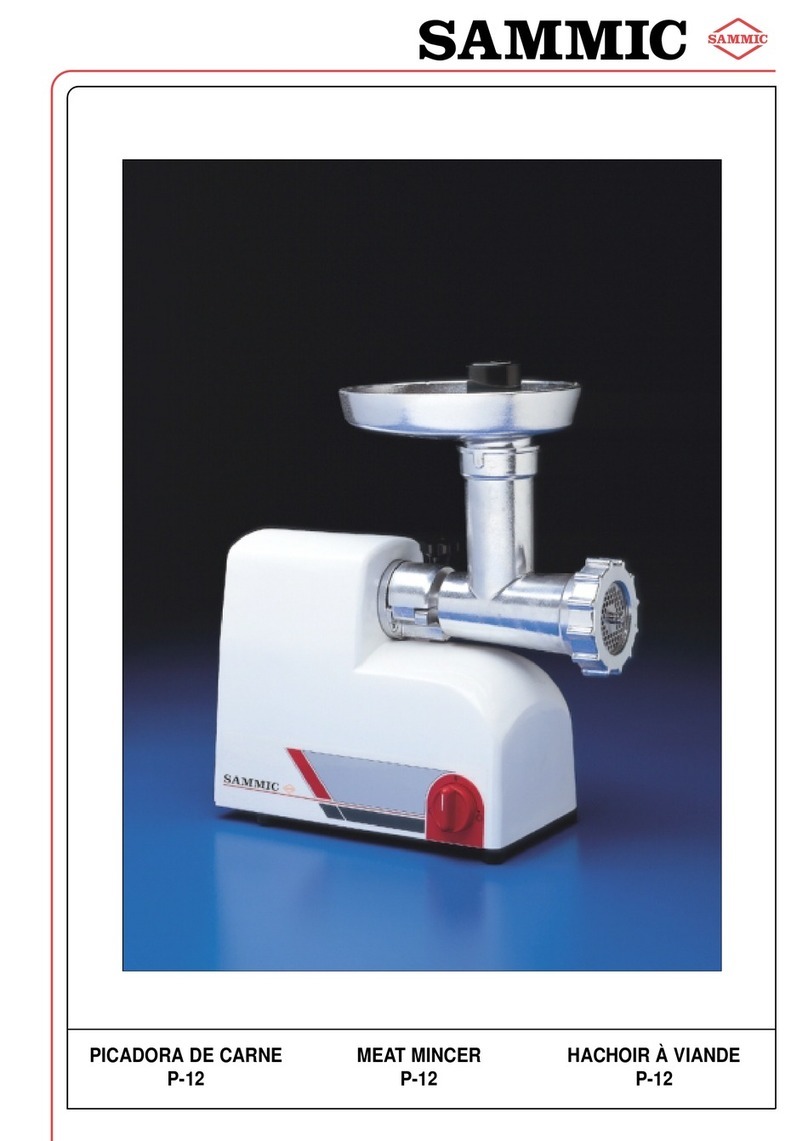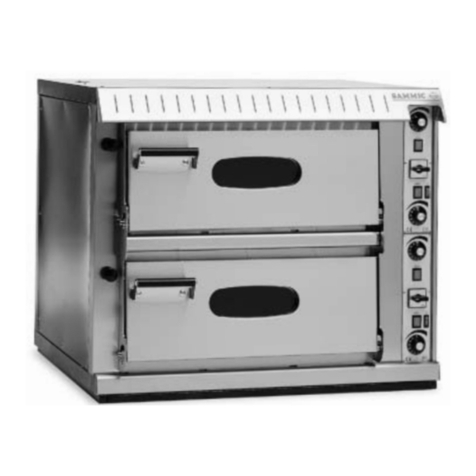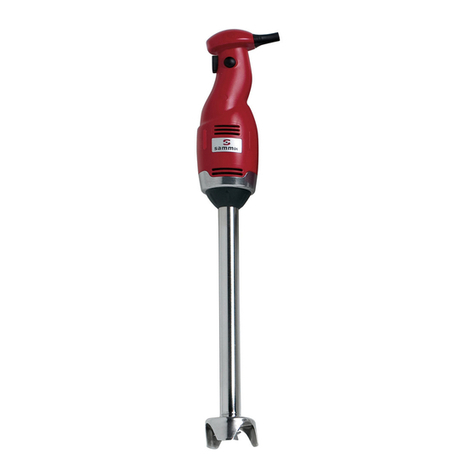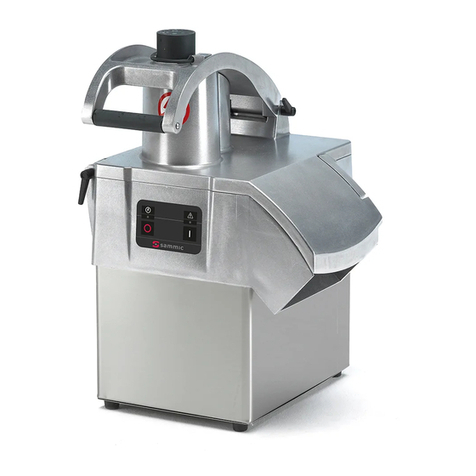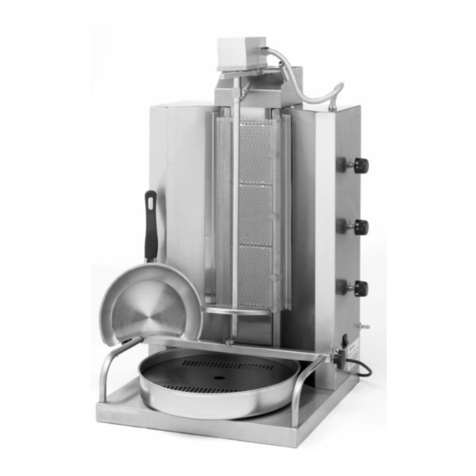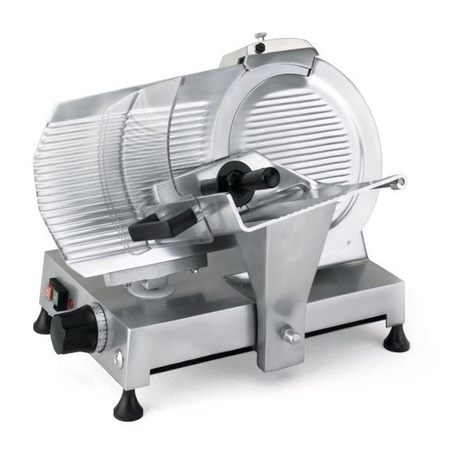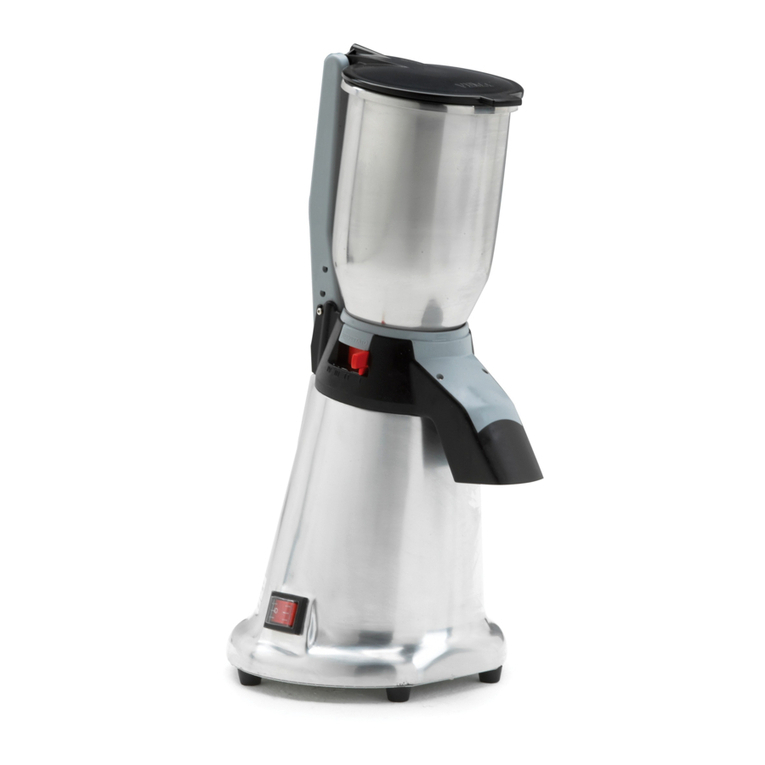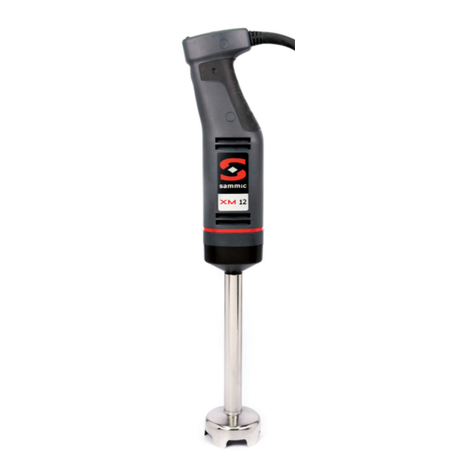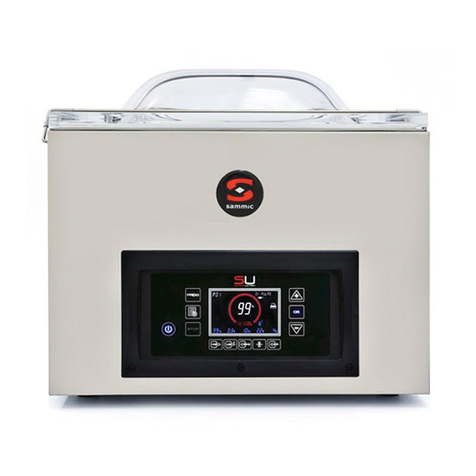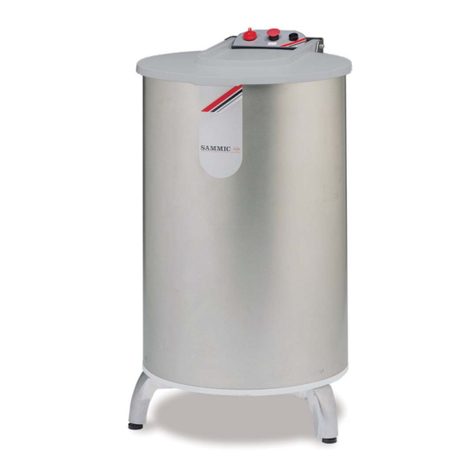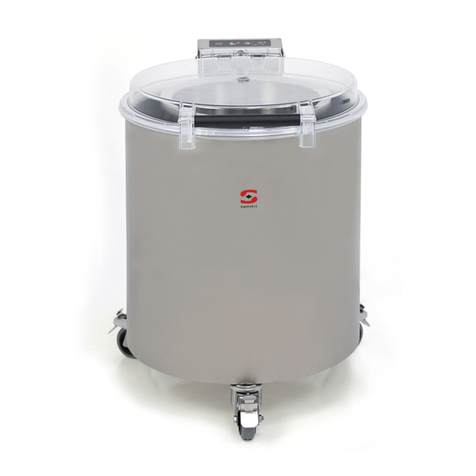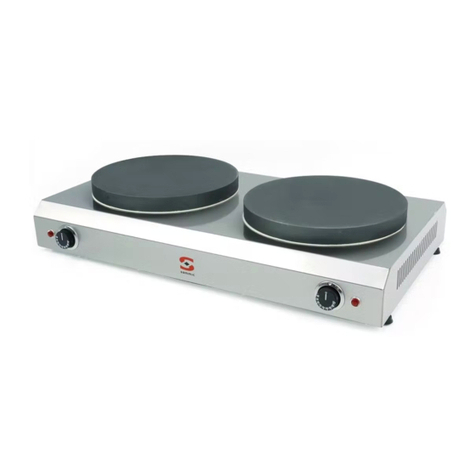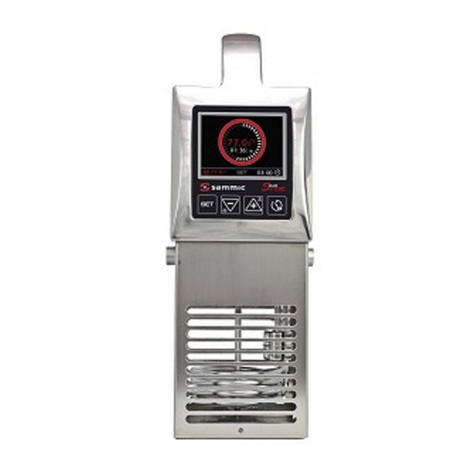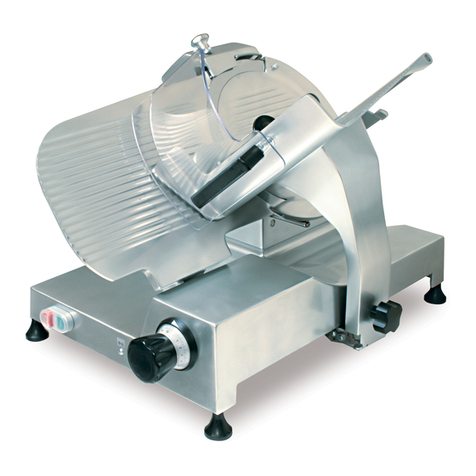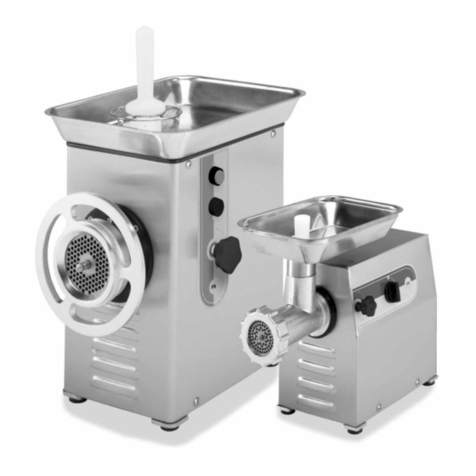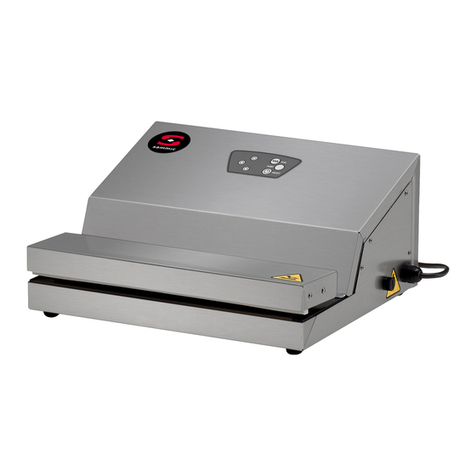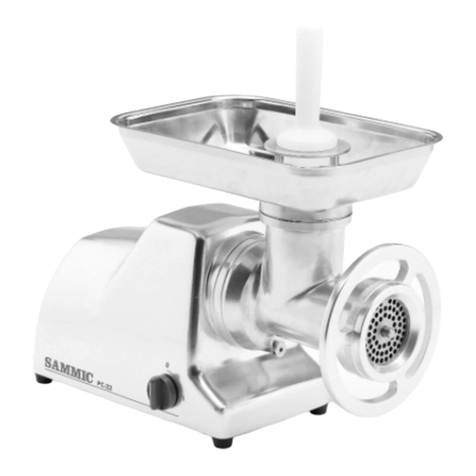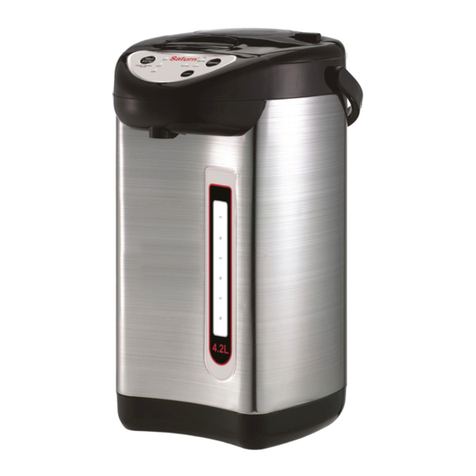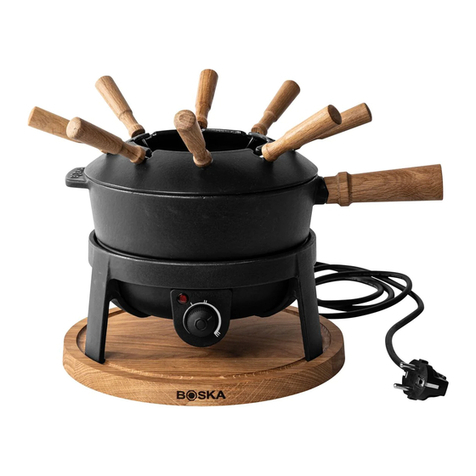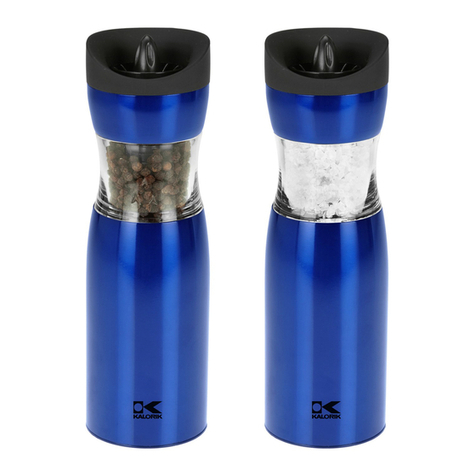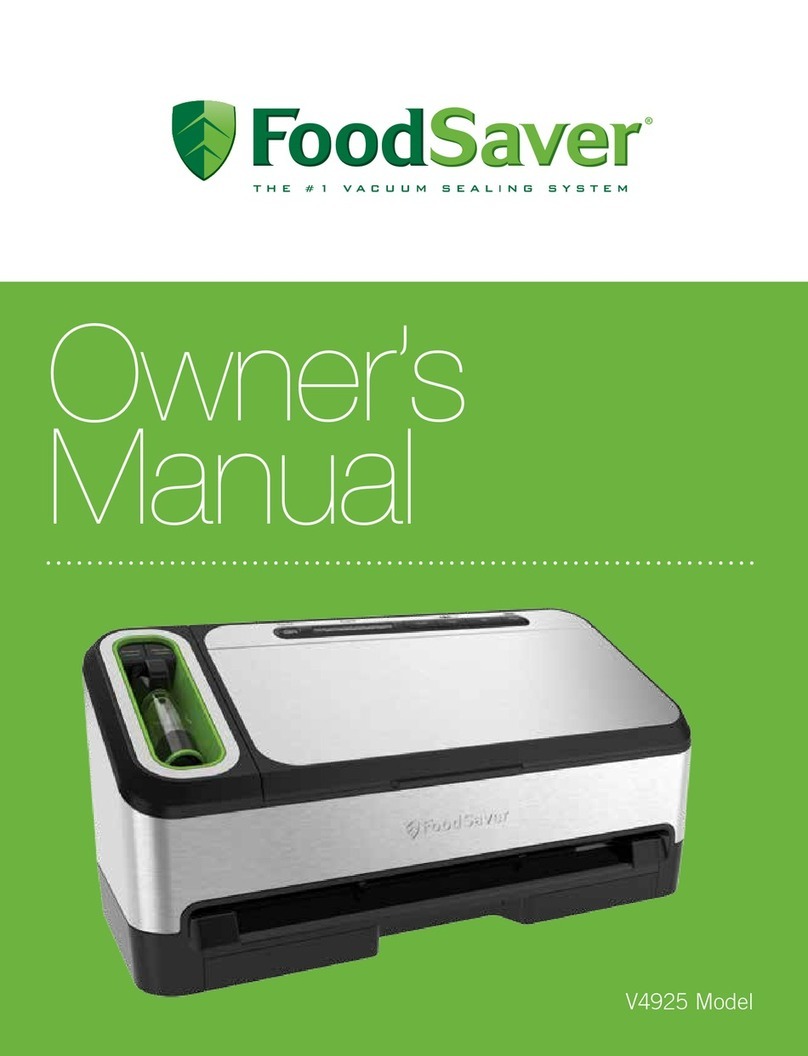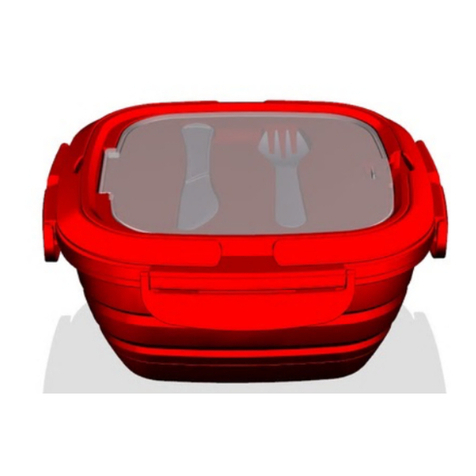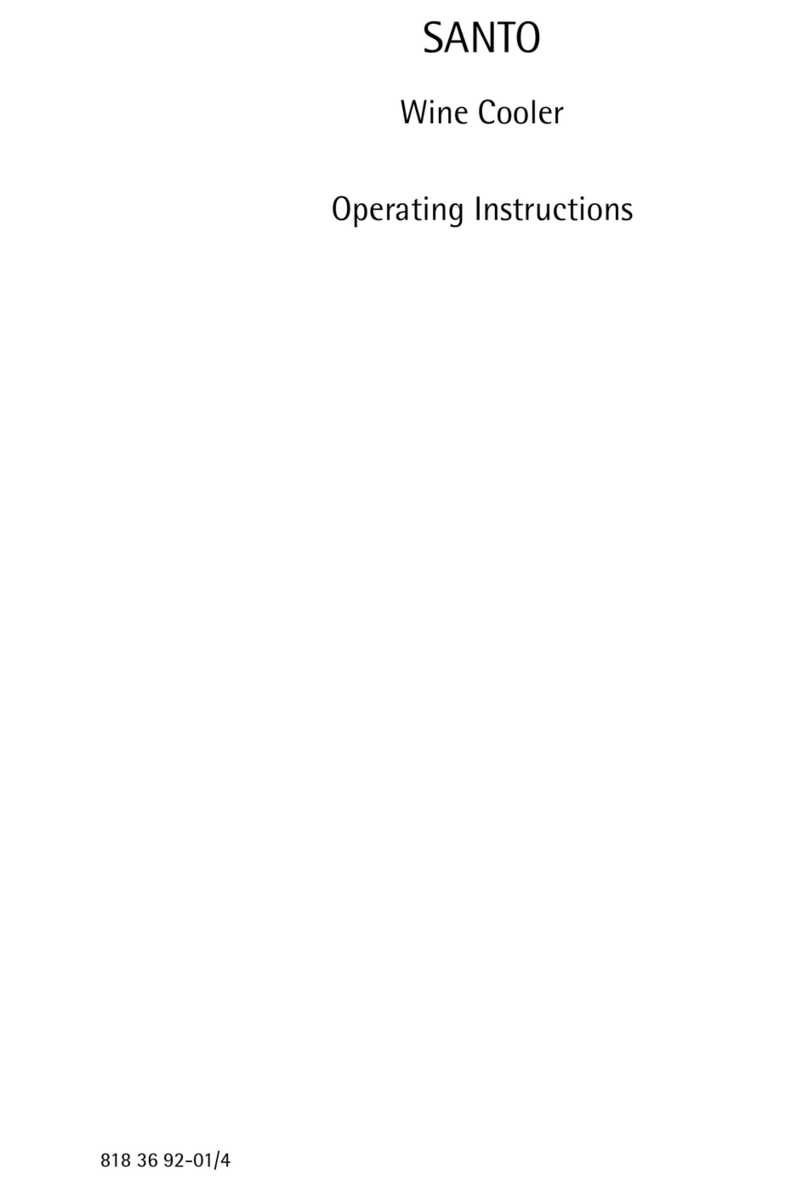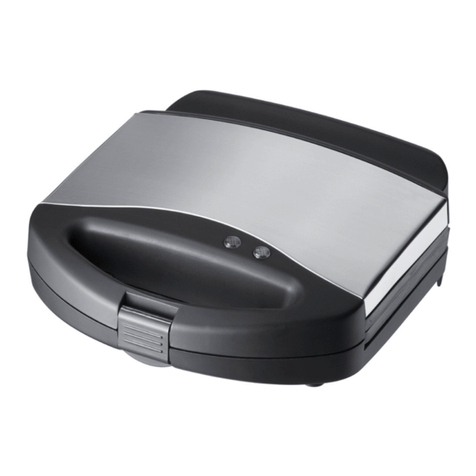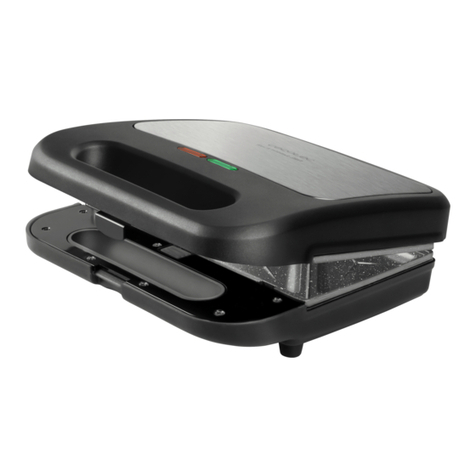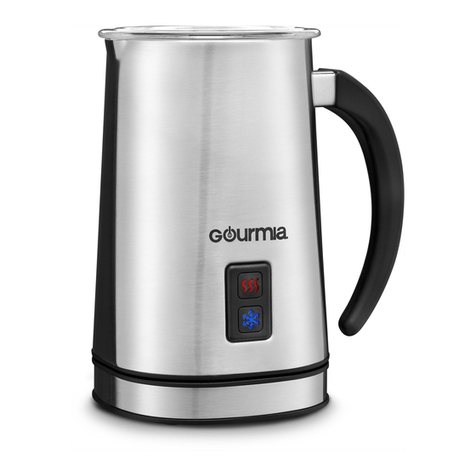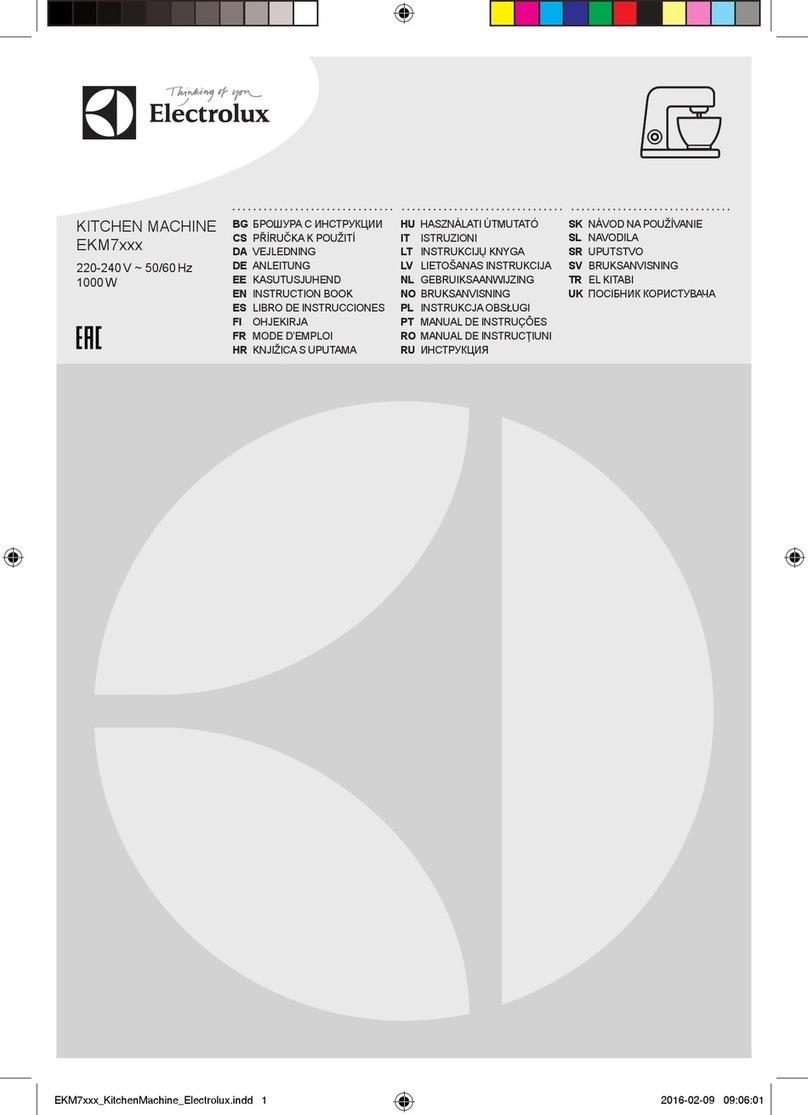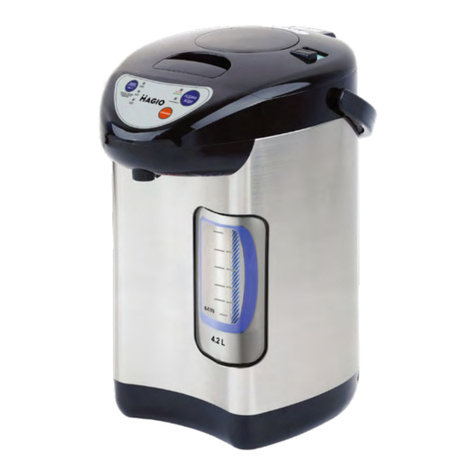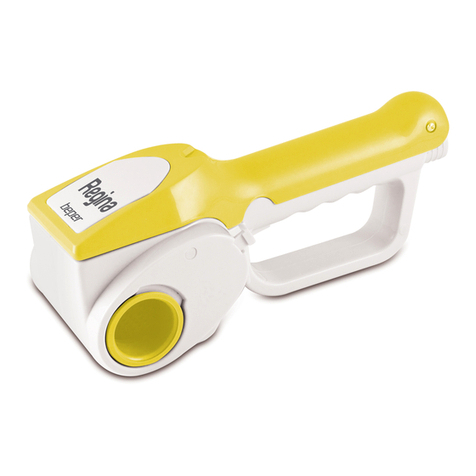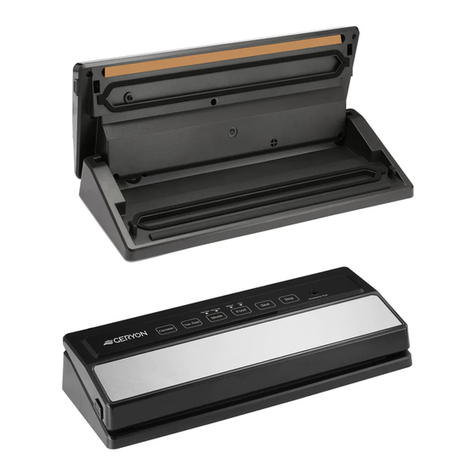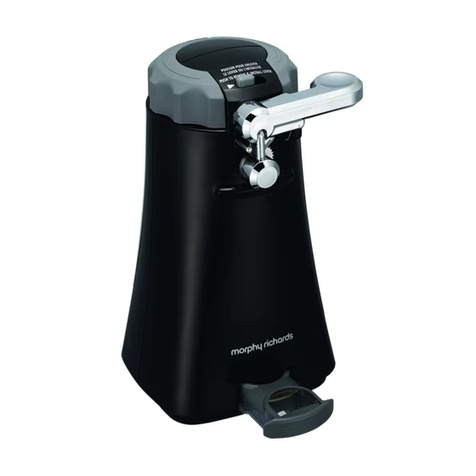
- 7 -
ES
- Poner en marcha la cortadora.
- Desbloquear el mazo (D) girándolo en el sentido horario.
“Mazo”(D). Repetir la operación una y otra vez.
- Pulsar “Parada” (14) al terminar la producción.
IMPORTANTE: Cuando no se utiliza la tolva cilíndrica, dejar el mazo (D)
dentro de la tolva.
Modo de funcionamiento “Cutter”. (CK-241, K-41 y KE-41):
Con la máquina desconectada de red:
Colocar el accesorio “Cutter” sobre el bloque motor y girarlo en sentido
anti-horario según el dibujo. Para que la máquina funcione el asa tiene que
colocarse justo encima del teclado. (Fig. 7)
Colocar el “Conjunto de cuchillas” (N) y cerrar la tapa (M) girándola en
sentido antihorario hasta que quede encajada y bloqueada. La tapa (M) va
está funcionando
El motor se pone en marcha al pulsar la tecla de marcha (3), y está en
marcha hasta volver a pulsar la tecla de parada (5) o la tecla PULSE (4).
También arranca y está en marcha mientras se mantenga pulsada la tecla
de PULSE (4).
LIMPIEZA
Limpieza de accesorio “Cortadora Hortalizas” CK-241 y CA-21:
- Desbloquear la tapa (E) girándolo en sentido horario según indicado en el
dibujo y retirarla.
- Retirar el disco (A) girándolo en sentido horario y tirando de él hacia arriba cui-
dadosamente. Retirar la rejilla (G) y el expulsor (I) o la rampa de evacuación (H).
- Es posible desmontar el pisador (B) y la tapa articulada (F) para facilitar
su limpieza.
ATENCION: Para poder retirar los productos encajados en las rejillas
(G) basta con golpearlas con una patata alargada o una zanahoria ente-
ra en el sentido de corte. De esta forma no se daña la rejilla (G). Tener
precaución con el lo de la rejilla (G). Nunca utilizar objetos duros para
golpear la rejilla (G).
Limpieza de accesorio “Cutter” (CK-241 y K-41):
- Si la suciedad está seca, adherida a la olla y a las cuchillas, poner agua
caliente y detergente en la olla y hacer funcionar a la máquina para que los
residuos se ablanden.
- Para evitar salpicaduras, una vez procesado el producto y quitar la olla (O)
con la cuchilla dentro(N).
Limpieza del bloque motor CK:
El exterior de la máquina NO SE DEBE limpiar con un chorro directo de
agua. Emplear para su limpieza un paño húmedo y cualquier detergente
habitual. NO SE DEBEN utilizar detergentes abrasivos (agua fuerte, lejía
concentrada etc…) ni estropajos o rasquetas que contengan acero común,
pueden causar el deterioro y la oxidación de la máquina.
Accesorio “Cortadora Hortalizas”: Funcionamiento de discos (A) y
rejillas (G).
- Discos (A):
1 y 2mm.
- Discos (A) de FCS-3 a FCS-12 para obtener rodajas de 3 a 12mm de
patatas, zanahorias, remolachas, coles, pepinos, calabacines, cebollas,
rábanos, etc.
- Discos (A) ralladores tipo SHS, desde 2 a 7mm, para deshilar verduras y
rallar queso, pan, nueces, almendras, etc.
Para cortar patatas del tipo “paja” y “cerilla”, tiras de zanahorias, apio, remo-
lacha, etc., discos (A) FCES
- Discos (A) SHSF y SHSG para rallar el pan, queso, chocolate, etc.
- Discos (A) y rejillas (G). Combinaciones posibles:
- Los discos(A) FCS-8, FCS-10 y FCS-12 combinadas con las rejillas(G),
FFS- 8 y FFS-10 se obtienen patatas del tipo “fritas”.
- Los discos (A) FCS-8, FCS-10 y FCS-12 combinados con las rejillas (G) FMS-
8, FMS- 10 y FMS-12, se obtienen dados y/o cubos de 8 a 12 mm de patatas
para tortillas, de hortalizas y frutas para macedonia, ensalada rusa, etc.
Expulsor (I) y rampa (H).
- Expulsor: Para extraer el producto cortado a gran velocidad y mantener así
una producción grande.
- Rampa: El producto va cayendo por gravedad poco a poco. Para dañar
menos el producto cortado.
Accesorio “Cutter”
Mediante el accesorio “Cutter” se puede:
PICAR: Perejil, ajo, cebolla, queso, jamón cocido, carne cocinada, etc...
SALSAS: Tomate, mayonesa, tártara, alioli, verde, gazpacho, etc...
PURES: Legumbres, verduras, compotas, etc... PASTAS: Gambas, mejillo-
nes, ostras, carne, embutidos, etc...
SOPAS / CREMAS: Marisco, ajo, verduras, legumbres, carne, etc...
En repostería:
PICAR: Almendras, avellanas, chocolate, pasas, frutas para macedonia,
etc... PREPARAR: Azúcar glass, pasta de almendras, batir nata; crema de
chocolate, vainilla, café, fresas y frutas en general, etc...
AFILADO DE CUCHILLAS
ATENCION: Los discos (A), rejillas (G) y el conjunto cuchillas (N) están
provistos de cuchillas muy aladas, por tanto, hay que manipularlas
cuidadosamente.
Las cuchillas de los discos (A) y del Conjunto Cuchillas (N) se desmontan
blandas conservando el ángulo de corte de la cuchilla.
ELIMINACION
Embalaje
Para eliminar el embalaje siga las normas de protección medioambiental
